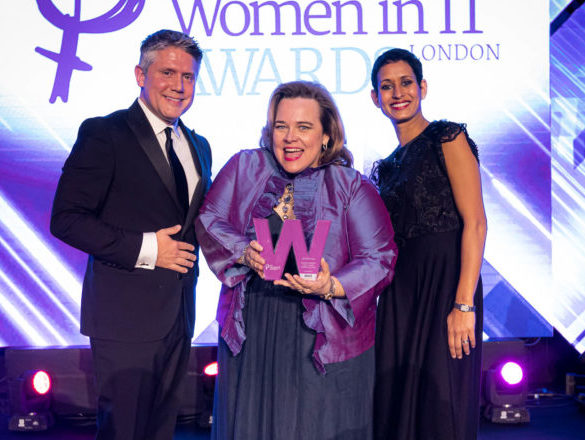Healthcare is an intensive, demanding and vulnerable industry. Technology has a significant role to play in easing these pressures and securing patients’ data and healthcare systems. But, it needs someone to lead this innovation drive — the CIO or CTO.
To find out the challenges and expected qualities of a CIO in healthcare, Information Age spoke to Amanda Hamilton, CIO at City & County Healthcare Group and the winner of CIO of the Year at Women in IT Awards London 2020.
Can you tell me about your role as a CIO in healthcare?
As CIO, I sit on our senior leadership team and report to the board and CEO.
I have ownership over our technology, both the infrastructure and the strategy, as well as the transformational arm of the business.
My aim is to direct change and drive transformation through the organisation, which has grown dramatically over the last three years. Over that period it’s doubled in size and we’re now the largest provider of home care in the United Kingdom.
It’s a highly acquisitive business and what we usually inherit is a mixed bag of applications, business processes and levels of professionalism and capabilities around back-office systems. My remit is to help transform these processes and drive efficiencies across these back-office systems, to help the carers and branch staff continue to deliver a really high-quality standard of care.
I’m responsible for aligning technology, strategy, delivery and transformation.

Amanda Hamilton is the CIO at City & County Healthcare Group.
What are the challenges you experience as CIO?
The same challenges are true for anyone in health and social care in the United Kingdom. Funding constraints are pretty well known and over a decade after the recession, the pressure remains.
In the service we deliver, more than 80% of our organisation is funded by local authorities. This means that we partner with clinical commissioning groups (CCGs) and local authorities to deliver services to vulnerable people that are under their care. The funding pressure exists in every local authority relationship that we have and that that trickles down from the top. And that means, to use technology solve problems, be scalable and maintain an extremely high level of quality, we have to be very efficient at what we do.
Any technology that we use must be really precise, it has to drive better outcomes for the vulnerable person that we’re delivering services to while delivering efficiency for our operational staff so that they can do their work more safely.
What qualities do you need to succeed in your CIO role?
A good CIO needs to be able to listen to their business and understand where technology fills the gap, brings value, drives efficiency and pushes a business’s mission or ambition forward — this is what I do for my organisation.
I do the ‘bread and butter stuff’ every day as well, such as cybersecurity and resilient infrastructure. But, in my mind, a CIO should take it beyond that.
It’s not just about delivering robust, resilient technology or managing an outsourced vendor, it’s about understanding where the pain points are for an organisation and looking at how technology and transformation can help solve those and drive the company forward.
Can you give an example of a transformation you’ve implemented?
When I arrived at the organisation three years ago, I set about putting together a typical infrastructure refresh with things like VDI and stronger cybersecurity processes, because it had been under-invested in for quite some time.
On top of that, we digitised the care planning process across 200 physical locations and more than 20,000 customers, by centralising our patient information and making it visible from the centre. This unlocked a ridiculous amount of value and efficiency in the organisation.
There’s loads of technology out there that you can use to help drive efficiencies and innovation from a healthcare perspective; there’s telemedicine and monitoring tools, and all of those have a lot of value. But, specifically for this business, being able to get an operational grip and control at a standardised high level of quality could be achieved by the digitalisation of the care planning process.
Finally, have you made an effort to build a diverse team? And if so, why?
Necessity is the mother of invention and discomfort is the mother of innovation.
Going back to funding, whether you’re in health and social care, or the public sector, those funding pressures and those constraints are real for most businesses today.
In order to solve some of these really big problems, innovation has to be at the forefront of your thinking when you’re talking about strategy and when you’re building a strategy for your business. I genuinely believe that innovation only comes from real diversity. Homogenised viewpoints will only get us so far. In fact, a balance of multiple views across a problem only brings further innovation.
When I arrived, there was zero female representation and very little diversity of any other. Now, there is almost a 40%, female base to help bring that diversity and innovation forward.
All of the transformational and technical roles that we’ve put in place over the last three years, whether that’s for owning, managing or deploying new infrastructure in our transformation program, have considered diversity at every time.
We have a healthcare-oriented business, where the majority of our staff in the field are female, and to not have that representation all the way up through the business into the central functions and up to the leadership team would be a mistake. So, we’ve driven diversity from the top down to create a balanced view of our environment.
For more information about the Women in IT Summit and Awards, click here.








